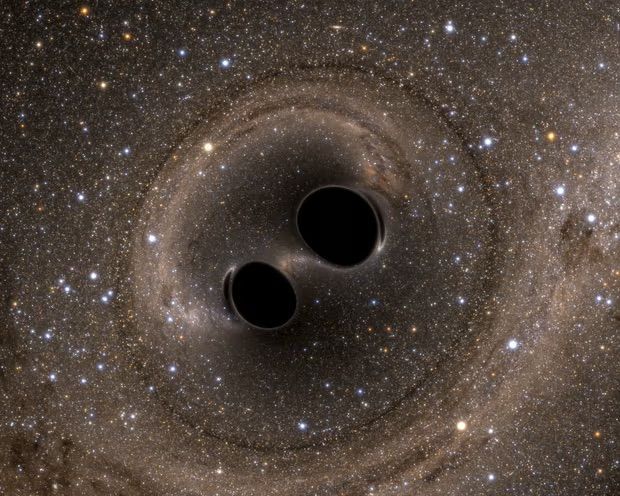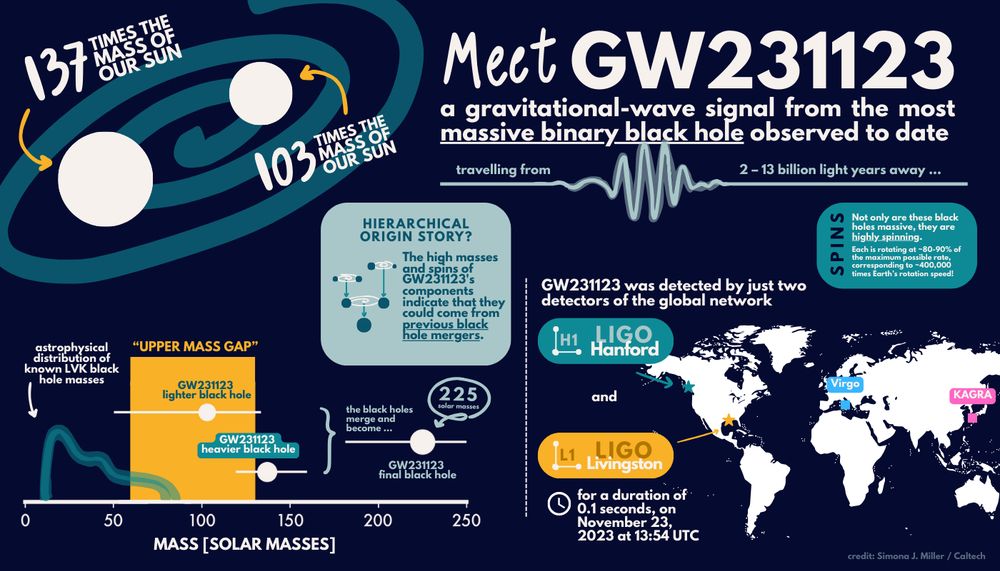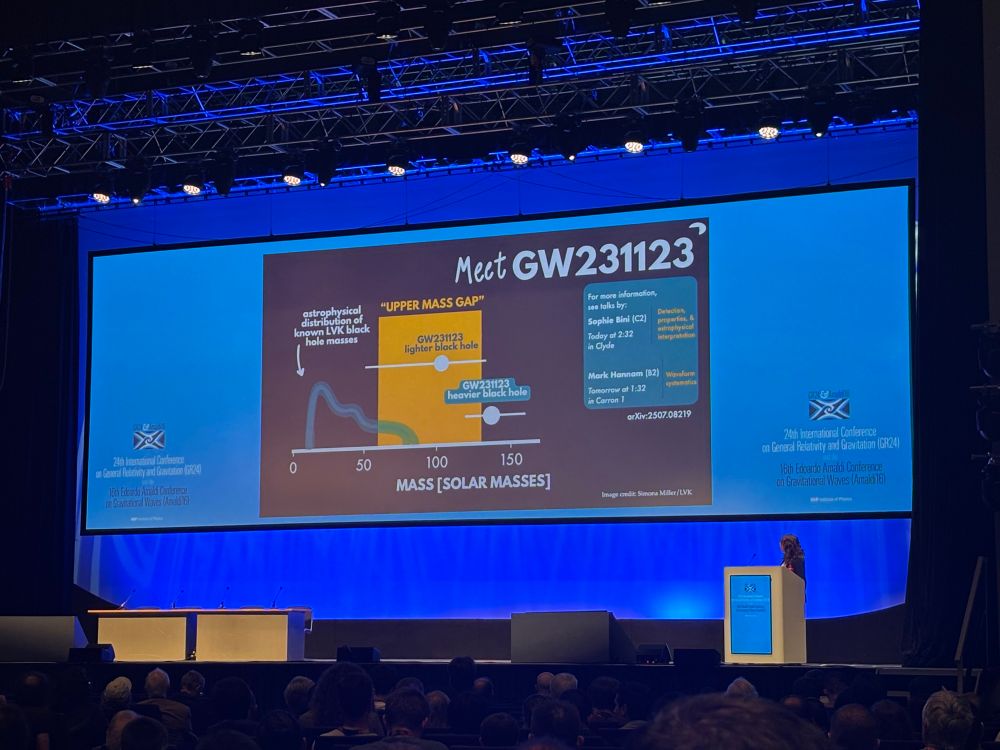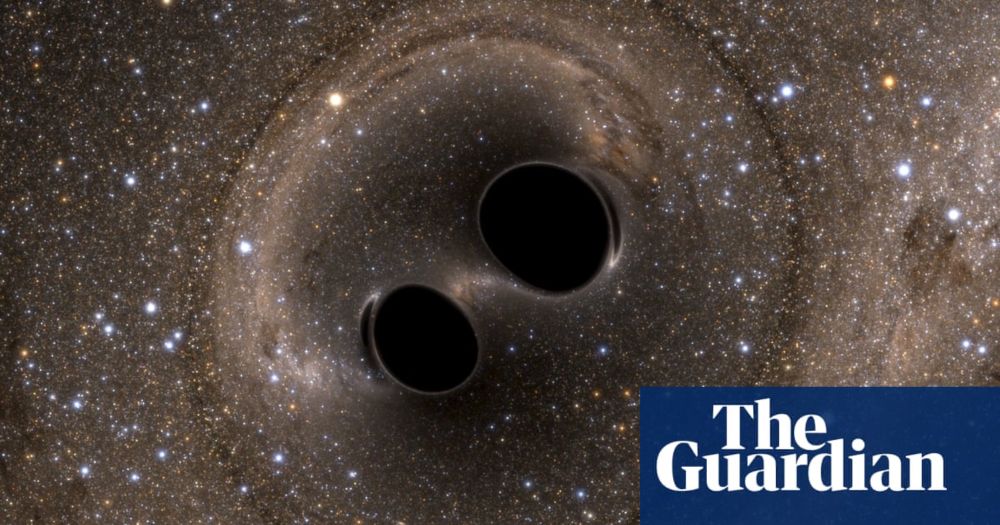
Media enquires: https://rowina-n.github.io
ORCiD: https://orcid.org/0000-0002-3922-2773
@simon-stevenson.bsky.social writes about gravitational-wave astronomy today
theconversation.com/10-years-ago...
#GW10Years 🔭🧪⚛️
🖼️: C Knox

@simon-stevenson.bsky.social writes about gravitational-wave astronomy today
theconversation.com/10-years-ago...
#GW10Years 🔭🧪⚛️
🖼️: C Knox
Thanks @pinkastrophysicist.bsky.social for making me the delicious cake and taking this photo of me being equally excited and terrified 5 minutes after submitting my PhD 🥰🎂🧑🎓

Read more here: lighthouse.mq.edu.au/media-releas...

Read more here: lighthouse.mq.edu.au/media-releas...

It's like a big blue Phoenix rising from the ashes of a sea of massive compact objects that slammed together to shake the very fabric of the cosmos!
👀👀👀
🔭
We're pleased to share the largest catalog of gravitational-wave observations with more discoveries of black holes and neutron stars
📰 arxiv.org/abs/2508.18082
🔭🧪⚛️☄️ #GWTC4

It's like a big blue Phoenix rising from the ashes of a sea of massive compact objects that slammed together to shake the very fabric of the cosmos!
👀👀👀
🔭

We're pleased to share the largest catalog of gravitational-wave observations with more discoveries of black holes and neutron stars
📰 arxiv.org/abs/2508.18082
🔭🧪⚛️☄️ #GWTC4

We're pleased to share the largest catalog of gravitational-wave observations with more discoveries of black holes and neutron stars
📰 arxiv.org/abs/2508.18082
🔭🧪⚛️☄️ #GWTC4
We have 128 new candidates of which 86 have a false alarm rate of less this 1 per year
The new catalog results arxiv.org/abs/2508.18082
Update on black hole and neutron star population arxiv.org/abs/2508.18083

We have 128 new candidates of which 86 have a false alarm rate of less this 1 per year
The new catalog results arxiv.org/abs/2508.18082
Update on black hole and neutron star population arxiv.org/abs/2508.18083

The one used in the Pioneer and Voyager spacecrafts uses slower and less stable pulsars.
This one uses millisecond pulsars!
Might make a few more changes to it. Also thanks to folks who gave feedback on v1.0.
#Pulsars
🔭📡

The one used in the Pioneer and Voyager spacecrafts uses slower and less stable pulsars.
This one uses millisecond pulsars!
Might make a few more changes to it. Also thanks to folks who gave feedback on v1.0.
#Pulsars
🔭📡

#OzGrav #Swinburne #MNRAS #NatashaVanBemmel

#OzGrav #Swinburne #MNRAS #NatashaVanBemmel

~100 M☉ + ~140 M☉ → ~225 M☉ remnant, spins near physical limit.
“This blip forces us to rethink how very heavy, rapidly spinning black holes come to be.” – Prof Eric Thrane
Read: www.ozgrav.org/news/ligo-de...

~100 M☉ + ~140 M☉ → ~225 M☉ remnant, spins near physical limit.
“This blip forces us to rethink how very heavy, rapidly spinning black holes come to be.” – Prof Eric Thrane
Read: www.ozgrav.org/news/ligo-de...
![Comic. The Three Types of Unsolved Physics Problem (First panel) Vague. PERSON [next to curved diagram] What is the nature of time in quantum gravity? Is it a background parameter, a dynamic aspect of spacetime, or an emergent phenomenon? (Second panel) Precise. PERSON 2 with short hair [device with equation below: 71Ga + νe → 71Ge + e- .] Why does the *S.A.G.E.* Gallium Neutrino Capture Experiment produce only 75% as much germanium as predicted? (Third panel) Cursed. PERSON 3 with white hat [rectangular block with hairs growing out of it labeled Zinc Whiskers] Why does some metal randomly grow hairs? It keeps causing short circuits and we have no idea what’s going on. OFF-PANEL: Is this a joke? PERSON 3: No! Please help!](https://cdn.bsky.app/img/feed_thumbnail/plain/did:plc:cz73r7iyiqn26upot4jtjdhk/bafkreiguoi672ahbrlp4eewfdz6v2ynlajbtpmucqed6fl4npoeu3uypkm@jpeg)



LIGO has seen ~300 of these collisions since 2015, but this one is HUGE creating a black hole 256x the mass of the Sun. It's likely the merging black holes were themselves the by-product of previous mergers 🤓🔭🧪
ℹ️: www.theguardian.com/science/2025...

LIGO has seen ~300 of these collisions since 2015, but this one is HUGE creating a black hole 256x the mass of the Sun. It's likely the merging black holes were themselves the by-product of previous mergers 🤓🔭🧪
ℹ️: www.theguardian.com/science/2025...

🔭 #WomenInStem

🔭 #WomenInStem

When I got "what is that bright thing I saw in the sky?" questions, I'd guess "Venus" and then go look it up, putting their location, and the time, and direction of the observation into Stellarium. 98% of the time that guess was right.
(More: www.popsci.com/science/ufo-...)
(It is brighter than the brightest stars and never far from the horizon when visible, so people unfamiliar with the night sky can easily be thrown by it.)
When I got "what is that bright thing I saw in the sky?" questions, I'd guess "Venus" and then go look it up, putting their location, and the time, and direction of the observation into Stellarium. 98% of the time that guess was right.


